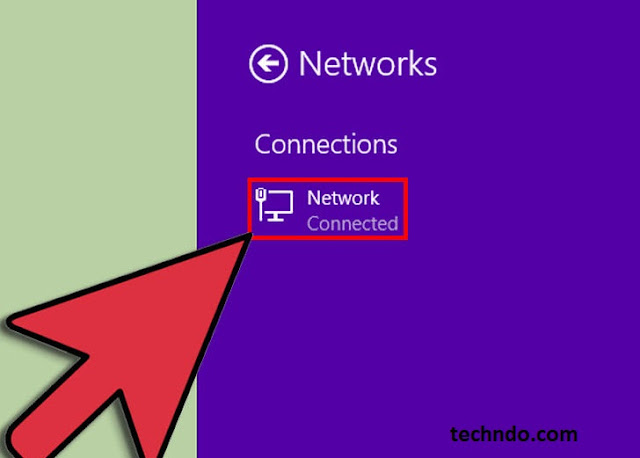Whether you are at home or at work, having a fast and efficient Internet connection is a vital component of your daily life. Slow speeds and weak connections can be frustrating and even costly. As more Internet-ready devices make their way into our homes and workplaces, keeping your web speed up is more important than ever. See Step 1 below to increase Internet speed and maximize the performance of your web-connected devices.
1. Checking Your Hardware and Service
1. Run a speed test. There are a lot of free tools
available online that will test your internet speed for you. Search for
“speed test” on your favorite search engine and run tests through
several different services. You may need to install plugins in order to
get the tests to run.
- Different tests will give you different results, even if you take the same test twice. This is because test servers are located in different areas and the number of people online can affect your speed. It is best to take a good sample of tests to see what your average is.
2. Compare your speed results against what you’re paying for.
Check your service plan to see what speed you are paying for. Many
service providers will claim speeds “up to” a certain number. This means
that they can’t guarantee that it will always be that high.
[ads-post]
3. Turn your modem off and on. Sometimes a simple reset can significantly increase your Internet speed. You can also turn your router on and off to see if that's helpful. Just make sure that you know your login information in case your computer requires you to enter it after the reset.
- If you are consistently receiving lower speeds than you are paying for, contact customer service and demand either a lower fee or speeds that match what you pay.
- If you haven’t upgraded your internet in a long time, you may be able to find faster internet for lower prices. Check all of the providers in your area.
- Don't fall for the megabit/megabyte trap. ISPs advertise in megabits, not megabytes. There are 8 megabits (Mb) in a megabyte (MB), so if you are paying for 25 megabits per second (Mbps), then that's just over 3 megabytes per second (MBps) of actual transfer speed.
[ads-post]
3. Turn your modem off and on. Sometimes a simple reset can significantly increase your Internet speed. You can also turn your router on and off to see if that's helpful. Just make sure that you know your login information in case your computer requires you to enter it after the reset.
4. Change your Wi-Fi channel. If many people in your
building are using the same channel, then you could notice a major
slowdown in your Internet speed. Use a program such as inSSIDer for PC
and KisMAC or WiFi Scanner for Mac to scan for channels that aren’t as
populated. Switching to one of these channels will reduce interference
and possibly increase your speed.
- If you see a more open channel, then switch channels to increase Internet speed. You'll need to consult your router’s documentation or look up the support site for your individual router to find out how to do access the router and change the wireless channel.
5. Move your wireless router or computer. If you are
connected to the internet via a Wi-Fi router, poor signal can lead to
lower speeds and dropped connections. If you can, move your router
closer to your computer to boost your signal, or move the computer
closer to the router.
- If the router is old, it may be time to upgrade. Newer routers can offer much improved connections and speed over older wireless routers.
- Dirty, dusty, or loose cables leading from your cable or DSL modem to your wireless router, or computer can cause significant reductions in your internet speed. Pick up a can of compressed air from your local computer store, and use it to blow out the dirt and dust in the connectors.
- Maintain proper ventilation around all electrical components to avoid overheating.
6. Try to use Ethernet instead of Wi-Fi. If you can, try
to hardwire as many of your connected devices as possible. This will
lead to higher speeds for those devices, as well as less interference
for your remaining wireless devices, such as tablets and phones.
7. Secure your network. If your wireless network doesn’t
have a password, not only are you leaving yourself vulnerable to others
spying on you, but you are also leaving your network open for anyone to
use. This means that other people can be stealing your bandwidth. Make
sure that your wireless network is properly secured, especially in crowded apartments.
8. Check your filters if you have DSL. When you
activated DSL, you hooked the line from your phone jack into one side of
a rectangular box filter. On the other side, you have 2 lines coming
out, 1 for your phone and 1 for your modem. If you are using a DSL
connection over your landline, make sure that you have high-quality
filters in place to get optimum signal speed.
9. Avoid running multiple devices at once. Turn off
smartphones, tablets, Smart TVs, set-top boxes or other devices that you
aren't currently using. If multiple devices are attempting to retrieve
information from the internet, especially streaming video or gaming, you
will see a loss of speed.
10. Check your data cap. Many internet service providers
impose a data cap on their customers that may not be immediately
visible. Log in to your account page, or contact the customer service
department to see if you have gone over your allowance. Oftentimes the
penalty for exceeding the allowance is decreased speed for the rest of
the billing period.





















0 blogger-facebook:
Post a Comment